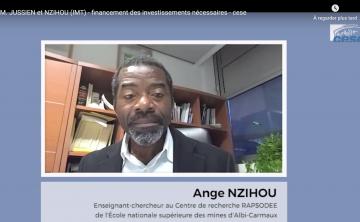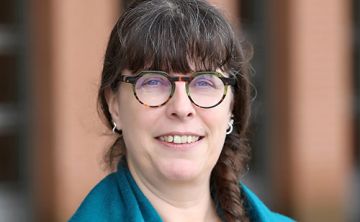Mitigating climate change with renewable energy
Discover the expert speech of Patricia ARLABOSSE on renewable energies, professor and deputy director of the research center RAPSODEE at IMT Mines Albi.
Renewable energies, a viable alternative?
Can you introduce yourself?
I'm Patricia Arlabosse, professor at IMT Mines Albi and deputy director of the RAPSODEE research center, a joint research unit with the CNRS (UMR CNRS 5302), Head of the MSc BiWEM (Biomass and Waste for Energy and Materials) master’s degree and of the specialization, Energy and Environmental Engineering of the French “Grandes Ecoles” program.
Do you believe it is still possible to limit some of the worst effects of climate change?
The climate evolutions depend among other things on greenhouse gases in the atmosphere due to human activities. There has already been an increase of one degree Celsius in the average global temperature compared to the preindustrial period. So, the changes are already underway. We can observe a rise in dangerous meteorological phenomena (storms, hurricanes, floods, fire) and exoduses due to rising sea levels. The question is: are we going to be able to limit global warming to an acceptable threshold? Climate experts estimate that we only have ten years left to act and contain global warming below 2°C.
Owing to the Covid19 crisis, 2020 was marked by a significant decrease in greenhouse gas emissions (-7% compared to 2019, in other words around 2.4 GtCO2) but we would need to reduce our emissions from 1 to 2 GtCO2 each year for the next 10 years to keep global warming under 2°C. So it is urgent to raise awareness of these challenges and to be actively engaged on a daily basis.
What are the viable alternatives to fossil fuels today?
The combustion of fossil fuels is responsible for a significant share of greenhouse gas emissions and hence for climate change. An energy mix with a gradual increase in the share of renewable energy is the answer. There are different kinds of renewable energy: hydropower, solar energy, wind energy, geothermal energy, bioenergy and waste-to-energy.. Today, only 15% of primary energy demand comes from renewable energy worldwide. Solar energy and wind power are intermittent energies. An energy mix allows to answer demand independent of the day/night cycle and the presence or absence of wind. Hydropower, geothermal energy and bioenergy can produce electricity continuously and thus are baseload and dispatchable power production systems.
What are the most promising research developments in renewable energy sources?
One of the biggest challenges for industry and mobility is to produce “green” hydrogen from renewable resources. One way of doing this is to use surplus renewable electricity to carry out water electrolysis. The other alternative is to convert biodegradable and fermentable waste into biogas, through methanization, or the biomass and lignocellulosic waste into “syngas”, through a thermochemical process, and then to purify them to recover pure hydrogen. One of the challenges is the economic profitability of these processes.
Energy storage is also a major technological bottleneck. Since we don’t know how to store electricity in its own form, it must be transformed to store it in another energy form. Storage is a general issue, which concerns solar and wind intermittent energies with the challenges of supply flexibility in particular but which goes far beyond this with the need to minimize energy consumption for example by recovering and re-using the low-grade heat (waste heat).
What solutions are under development in energy storage?
There’s a lot of research in this field. Energy can be stored in different forms (mechanical, thermal or chemical energy), with hydrogen production being a form of chemical storage. For thermal energy, new phase change materials based on molten salts, which can store and release much larger quantities of energy, are for instance under development. However, one of the major challenges is how to manage these storage facilities, or how to load and unload the storage as a function of user demand.
What is a circular economy mindset?
The circular economy is a new economic model with a global and systemic vision, that covers the whole cycle, including the production, consumption, waste management and secondary raw materials. The objective is to promote a system that is low in carbon and energy, which is why, for instance, we need to move towards storage and exploitation of waste heat. When energy is transformed, the yields are never 100%, which means losses. If the heat is available at low temperatures, it can be stored and recovered for other uses. For example, it can be reused to heat pools, to supply industrial and municipal heating networks. Hence we also need a global vision to think about how to organize urban areas to promote a diverse environment with housing, offices and businesses and to globally optimize this ecosystem. This must be a concerted approach, involving different public and private actors, which is also right in line with mobility issues. But the circular economy is also low in natural resources, which means recycling end-of-life products and eco-designing new products to favour recycling. Ultimately, this means a zero waste approach.
What would you say to a student who asks, “What can I do to stop climate change”?
I would say it takes being an engaged citizen, in other words to place ecology at the center of all your decisions and of all your acts of consumption, and it takes being an enlightened engineer, in other words to make good career choices and to try to share this global, systemic vision with the teams around you. Pedagogy is essential so that everyone (engineers, the company, the client but also the general public, and in particular young people) takes ownership of these concepts, the existing solutions and innovations.



